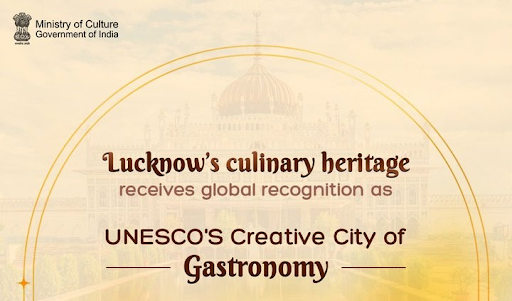Description

Source: Hindu
Disclaimer: Copyright infringement not intended.
Context
The heritage conservation and development of Jaipur will be taken up with a budgetary expenditure of ₹100 crore.
Details
- The Walled City of Jaipur was founded in 1727 by Sawai Jai Singh II.
- It was inscribed as a UNESCO World Heritage Site in 2019 under criteria (ii), (iv), and (vi) (human values, urban planning, and living traditions).
- It is also known as pink city.

Disclaimer: Copyright infringement not intended.
Outstanding Universal Value
Read about World Heritage Sites: https://www.iasgyan.in/daily-current-affairs/world-heritage-sites-47
https://www.iasgyan.in/daily-current-affairs/unesco-world-heritage-sites-40#:~:text=It%20is%20a%20specialized%20agency,arts%2C%20sciences%2C%20and%20culture.&text=It%20was%20founded%20in%201945%20and%20is%20headquartered%20in%20Paris%2C%20France.
Criterion (ii): Exchange of Human Values
- Jaipur represents a mix of Hindu, Mughal, and Western influences in its town planning and architecture.
- The city’s grid-iron planis inspired by Western examples, but enhanced with Vedic architecture.
Criterion (iv): Architectural and Urban Planning
- Its urban form contrasts with medieval cities due to its broad streetsand linear structure, all designed to facilitate trade and commerce.
- The markets (11 main bazars) represent architectural styles spanning from the 18th to the 20th centuries, with a singular color schemeand unified facades.
- Many havelisand temple complexes are located along the main bazars and at the
- The city's layout features continuous colonnaded businesses, intersecting streets, and large public squares called chaupars and sectors known as chowkris.
- Its markets, shops, residences, and temples along the main streets have uniform facades.
Criterion (vi): Living Traditions
- Jaipur has historically been a hub for crafts.
- The city initially planned to house 36 industries(Chhattees Karkhane), many of which continue today.
- Crafts like jewelry making, painting, carving, and other traditional handicrafts are still practiced.
Jaipur’s Inscription Journey
- The Jantar Mantar, Jaipur (Inscribed in 2010):
-
- Jantar Mantar is an early 18th-century astronomical observation site.
- It includes 20 fixed instruments representing India’s astronomical heritage.
- Hill Forts of Rajasthan (Inscribed in 2013):
-
- It includes forts in Amber Fort (Jaipur), Chittorgarh, Kumbhalgarh, Sawai Madhopur, Jhalawar, and Jaisalmer.
- These forts demonstrate Rajput power and culturefrom the 8th to 18th centuries.
- Creative City of Crafts and Folk Art (Inscribed in 2015):
-
- Jaipur is known for its historical craftsof jewelry making, painting, and carving.
- The city hosts the Jaipur International Heritage Festival.
- Other initiatives include:
- Citizens Outreach Celland Heritage Walks
- Haatmuseum and Crafts and Folk Art Gallery
- Global Art Square.
World Heritage Sites in India
Indian Properties inscribed on the World Heritage List (43)
Cultural (35)
- Agra Fort (1983)
- Ajanta Caves (1983)
- Archaeological Site of Nalanda Mahavihara at Nalanda, Bihar (2016)
- Buddhist Monuments at Sanchi (1989)
- Champaner-Pavagadh Archaeological Park (2004)
- Chhatrapati Shivaji Terminus (formerly Victoria Terminus) (2004)
- Churches and Convents of Goa (1986)
- Dholavira: a Harappan City (2021)
- Elephanta Caves (1987)
- Ellora Caves (1983)
- Fatehpur Sikri (1986)
- Great Living Chola Temples (1987,2004)
- Group of Monuments at Hampi (1986)
- Group of Monuments at Mahabalipuram (1984)
- Group of Monuments at Pattadakal (1987)
- Hill Forts of Rajasthan (2013)
- Historic City of Ahmadabad (2017)
- Humayun's Tomb, Delhi (1993)
- Jaipur City, Rajasthan (2019)
- Kakatiya Rudreshwara (Ramappa) Temple, Telangana (2021)
- Khajuraho Group of Monuments (1986)
- Mahabodhi Temple Complex at Bodh Gaya (2002)
- Mountain Railways of India (1999,2005,2008)
- Qutb Minar and its Monuments, Delhi (1993)
- Rani-ki-Vav (the Queen’s Stepwell) at Patan, Gujarat (2014)
- Red Fort Complex (2007)
- Rock Shelters of Bhimbetka (2003)
- Sun Temple, Konârak (1984)
- Taj Mahal (1983)
- The Architectural Work of Le Corbusier, an Outstanding Contribution to the Modern Movement (2016)
- The Jantar Mantar, Jaipur (2010)
- Victorian Gothic and Art Deco Ensembles of Mumbai (2018)
- Santiniketan (2023)
- Sacred ensembles of Hoysalas (2023)
- Moidams (2024)

Natural (7)
- Great Himalayan National Park Conservation Area (2014)
- Kaziranga National Park (1985)
- Keoladeo National Park (1985)
- Manas Wildlife Sanctuary (1985)
- Nanda Devi and Valley of Flowers National Parks (1988,2005)
- Sundarbans National Park (1987)
- Western Ghats (2012)
Mixed (1)
- Khangchendzonga National Park (2016)
Sources:
Hindu
|
PRACTICE QUESTION
Q: Consider the following statements regarding Jaipur:
- It is one of the earliest planned cities of modern India designed by Sawai Jai Singh II.
- It houses two World Heritage Sites.
Which of the above statements is/are correct?
a) 1 only
b) 2 only
c) Both 1 and 2
d) Neither 1 nor 2
Answer: d)
Explanation:
1st statement is incorrect:
Jaipur was founded in 1727 by Sawai Jai Singh II, the Kachhwaha Rajput ruler of Amer, after whom the city is named. It is one of the earliest planned cities of modern India, designed by Vidyadhar Bhattacharya. During the British colonial period, the city served as the capital of Jaipur State. After Indian independence in 1947, Jaipur was made the capital of the newly formed state of Rajasthan in 1949.
2nd statement is incorrect:
It houses 3 World Heritage Sites:
1.Jaipur city
2.Amber fort
3.Jantar Mantar
|
















